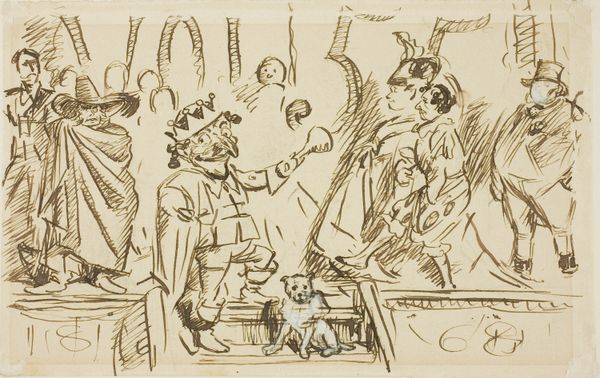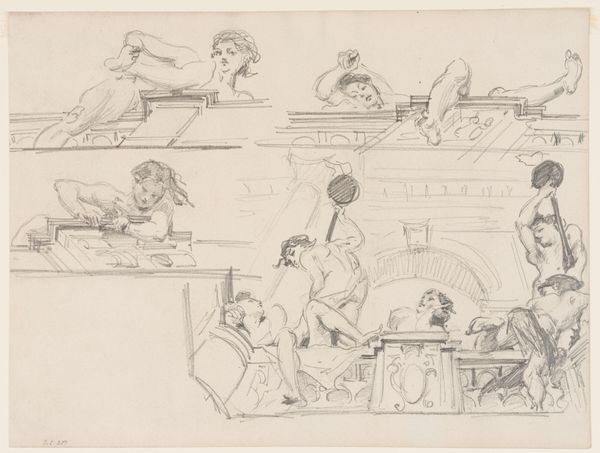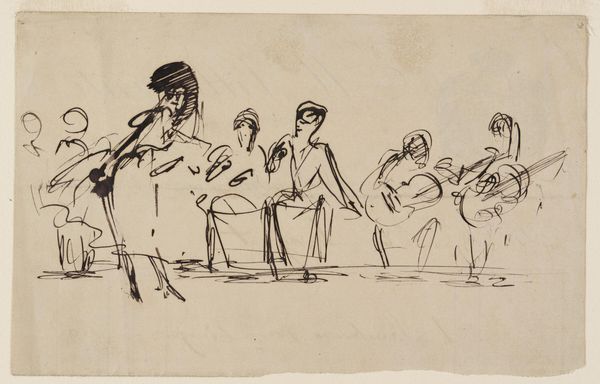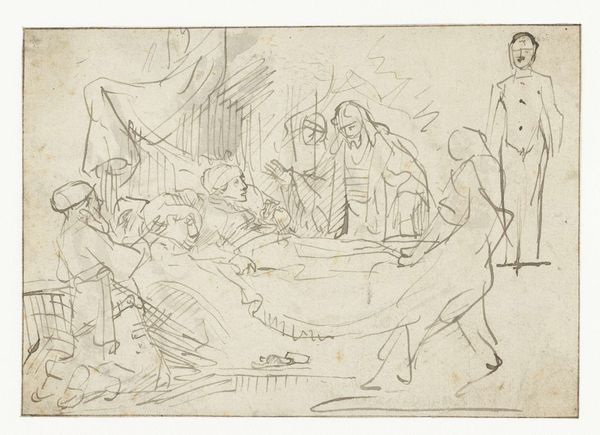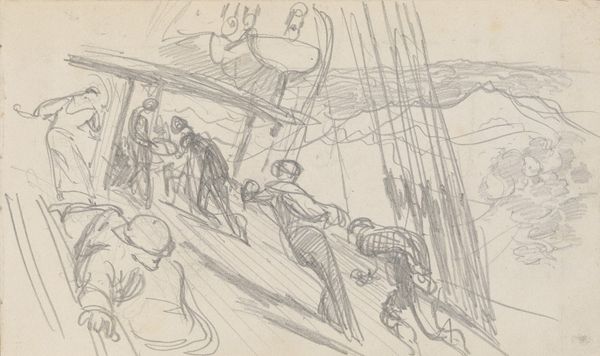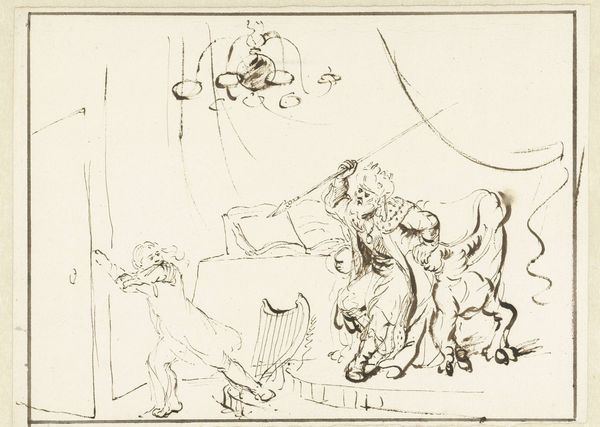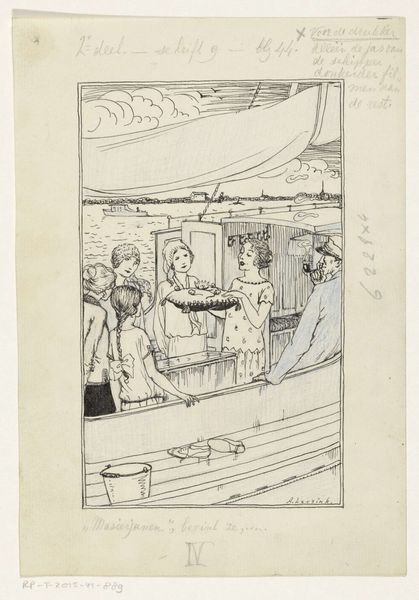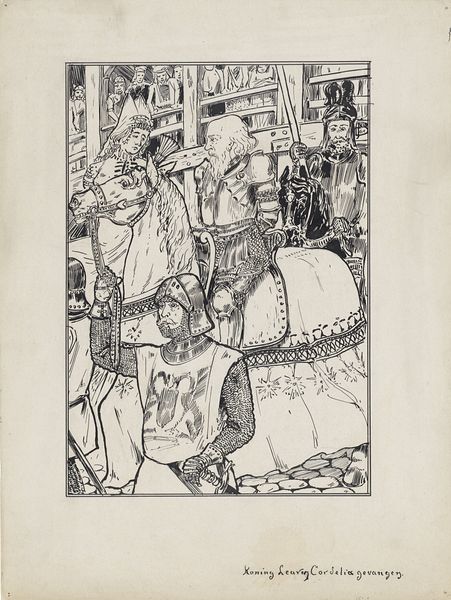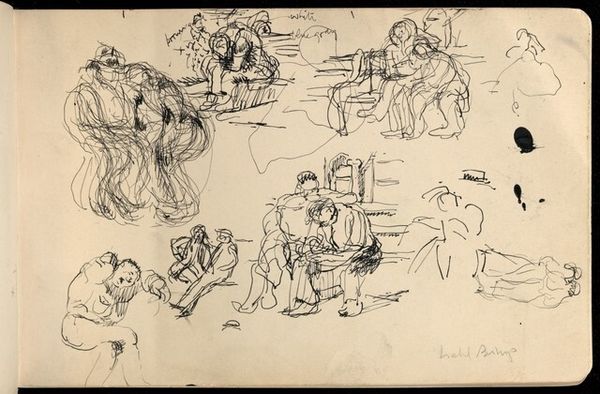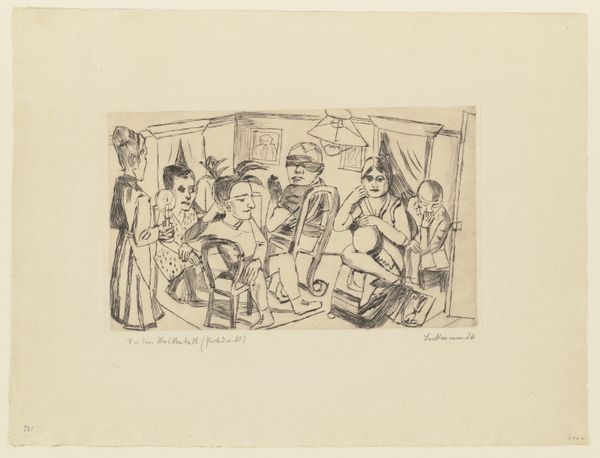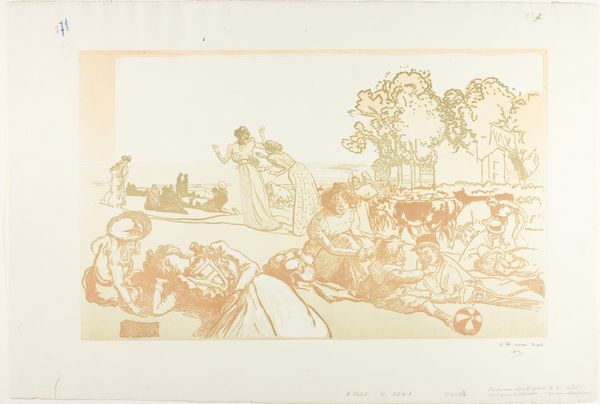
Courtesan entertaining Daikoku and Fukurokuju, no. 10 from a series of 12 prints c. 1708
0:00
0:00
print, paper, ink, woodcut
#
ink drawing
#
narrative-art
# print
#
asian-art
#
ukiyo-e
#
figuration
#
paper
#
ink
#
woodcut
#
genre-painting
Dimensions: 26.7 × 37.9 cm
Copyright: Public Domain
Curator: Here we have a print titled, "Courtesan entertaining Daikoku and Fukurokuju, no. 10 from a series of 12 prints" created by Okumura Masanobu around 1708. The scene rendered in ink on paper presents figures on what seems like a porch with water and a bright sun in the background. It’s part of the Art Institute of Chicago's collection. Editor: My initial impression is of a very calm domestic scene, almost dreamlike with the soft washes and spare line work. Is it a private celebration of some sort? Curator: Indeed. The print illustrates an intimate gathering featuring a courtesan, Daikoku, the god of wealth, and Fukurokuju, the god of wisdom and longevity. We see them enjoying a banquet, reflecting the blending of worldly pleasures and divine blessings that was characteristic of ukiyo-e culture. Editor: Interesting! How does the artist portray the courtesan within the historical context of her social standing? Does she command this space, or is there a submissive quality to her pose? Curator: That's a very astute question. The courtesan, while clearly an entertainer, is also presented as a figure of refined artistry and perhaps even power in her ability to charm deities. Her engagement with music is active, marking her not merely as a sexual object but also as an essential patron of culture and refined artistic practice. Remember that depictions in this period actively challenged and reinforced social hierarchies. Editor: So the print, beyond its aesthetic appeal, participates in negotiating the complex societal role of women entertainers. It shows that imagery, even when seemingly decorative, always reflects prevailing societal tensions and values. What resonates, I suppose, is this almost surreal merging of gods with everyday life—and how that plays with conventional morality. Curator: Precisely. What might at first seem like mere decoration, in fact, reflects a multilayered commentary on social, religious, and artistic roles in early 18th-century Japan. Editor: This brief encounter makes it even more crucial to reexamine and perhaps disrupt traditional, Eurocentric approaches to art history. Understanding this work’s layered symbolism, and cultural milieu expands our view and reveals it as an act of subtle socio-political intervention. Curator: Agreed. We can appreciate it's value far beyond that of a beautiful, ephemeral scene.
Comments
No comments
Be the first to comment and join the conversation on the ultimate creative platform.
